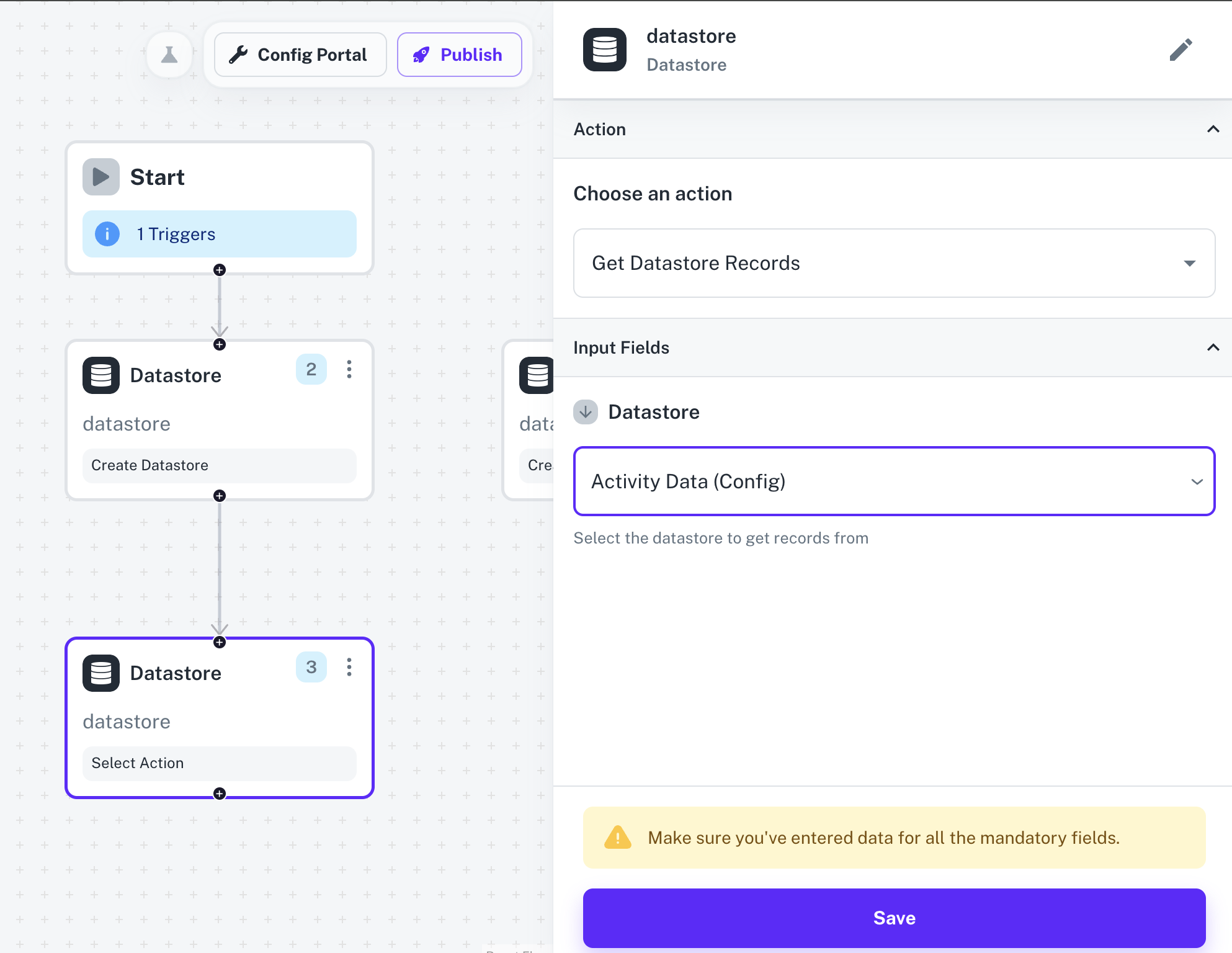Nodes
(Deprecated) Datastore Node
The DataStore node in Cobalt allows users to manage dynamic data generated within workflows. Datastores are structured with rows and columns , the DataStore node let the users to store, manipulate, or retrieve data, enhancing the flexibility and efficiency of workflow automation.
 While using this action, the user is required to provide information like the Type, Name of Datastore and the Columns for the Datastore and then click on
While using this action, the user is required to provide information like the Type, Name of Datastore and the Columns for the Datastore and then click on 






Runtime Variable Creation
Users can create and utilize variables at runtime within workflows, enabling dynamic data management and manipulation. This capability allows users to adapt workflows to changing requirements and scenarios, enhancing workflow flexibility and adaptability.DataStore Types
The type of a Datastore can be chosen by the user when the Create Datastore action is selected in the node. The DataStore node can be of two types:Workflow Type DataStore
This type of DataStore is specific to the respective workflow. Data stored in a Workflow Type DataStore is accessible only within the context of the workflow in which it is created.Config Type DataStore
Config Type DataStore can be used across all workflows of the respective application. Data stored in a Config Type DataStore is accessible across multiple workflows within the same application in Cobalt.DataStore Actions
The DataStore node offers a range of actions which can be used in a Workflow:- Create Datastore
- Delete Datastore
- Get Datastores
- Add Datastore Records
- Search Datastore Records
- Get Datastore Records
- Update Datastore Records
- Delete Datastore Records
Create DataStore action
Users can create new DataStore instances within workflows, specifying the Type (Workflow or Config) and defining the structure of the DataStore.This action is mandatory to use to create any new datastore required for the Workflow of any application.
 While using this action, the user is required to provide information like the Type, Name of Datastore and the Columns for the Datastore and then click on
While using this action, the user is required to provide information like the Type, Name of Datastore and the Columns for the Datastore and then click on Save.
Delete DataStore action
Users have the option to delete existing DataStore instances by using this action. The user is required to provide the name of Datastore which needs to be deleted.
Get DataStores action
Users can retrieve a list of all DataStores associated with the workflow or application, providing visibility into existing data storage structures. After selecting the action, just select the Type of Datastore that you want to fetch.
Add DataStore Records action
Users can add new records to a table DataStore, specifying the appropriate DataStore instance and the data to be stored in it. When the user selects the Datastore from the Datastore dropdown, then the user can add the data in the columns of it.
Search DataStore Records action
Users can search for specific records within a DataStore. As you selects the Datastore in the action, you can now search for records based on any of the columns’ value present in the Datastore.
Get DataStore Records action
Users can retrieve all the records of a DataStore by selecting the Datastore from the dropdown, enabling access to stored data for further processing within the workflow.
Update DataStore Records action
Users can update existing records of a DataStore table, modifying data values or attributes as needed to reflect changes or updates. User can select the Datastore which they want to update and then enter the new values in the respective fields to update it.
Delete DataStore Records action
Users can delete specific records from a DataStore table, removing outdated or unnecessary data entries to maintain data integrity and efficiency. Select the Datastore from which you want to delete a Record and provide the unique Record_Id of the record which was generated during record creation.